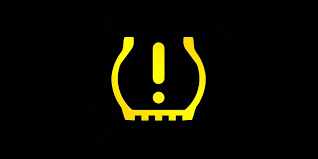This article answers the popular question: What are low tire pressure warnings and what should I do if my car has one?
That dreaded moment – you hit something in the road and your tire pops. Or you’re driving down the road and your low tire pressure warning lights up. Driving on a flat or low-pressure tire is never recommended, so if you know your tire has gone flat or may have a small leak, pull over to the side of the road immediately to assess the tire damage.
Low-pressure warnings
It’s important to note that a flat tire and a low-pressure tire may indicate different issues. Most newer vehicles have a low tire pressure warning light and sound that is activated on your vehicle’s dashboard. According to an article by Chapel Hill Tire, When your tire inflation falls slightly beneath your tire’s recommended PSI, the low-pressure warning may be activated. Low pressure could be caused by small punctures (such as a nail in your tire), standard air loss, and cold weather. Just because your tire has low pressure does not necessarily mean there is an issue that requires a repair or tire replacement. Always assess the situation before driving the vehicle again.
Inflate your tires
If your tire has experienced standard air loss, has low pressure from a sudden drop in temperature, and can’t see any visible damage, obstructed object, or nail, the best thing to do is to inflate your tire back up to the recommended PSI.
Proceed to your nearest gas station to fill your tire with air. Once your tire is inflated to the recommended PSI, continue to monitor your tire closely to make sure the tire pressure remains up. If the air continues to slowly leak out, there may be a small puncture or nail causing a slow leak. It’s recommended that you proceed to your nearest auto body shop for tire assessment and tire patching or a full tire replacement.
Patch your tire
If you pull over to the side of the road and you notice your tire has a nail or small gash caused by debris, or other objects, you may be able to salvage the tire with a patch. Your local auto repair shop will be able to tell you if the tire can be patched. It usually depends on the location of the damage or hole.
If you have a low-pressure warning, fill your tire back up with air, and it continues to leak out, this usually indicates a small leak and the tire can be patched.
Replace your tire
If you pull over to the side of the road and the wheel is sitting completely on the ground, it is time to start putting on the spare tire. Once the tire has completely popped and is riding on the wheel, continuing to drive the vehicle is catastrophic to your vehicle’s wheels, axles, and suspension. Pull over immediately if you think your tire has gone flat.
For a how-to guide on how to change a flat tire and install a spare tire, read this helpful article by Truman’s Automotive.
Contact Truman’s Automotive for your tire repair & replacement
Truman’s has the tools and expertise to remove and replace any damaged components to get your vehicle on the road again. For all your tire repair and replacement needs, contact Truman’s Automotive & ADAS Calibration today.

